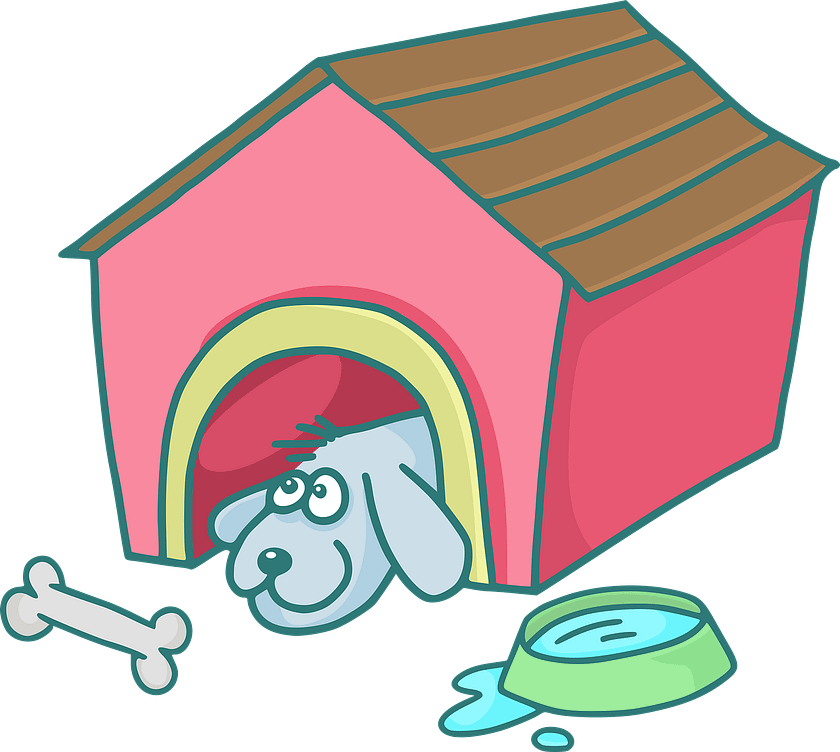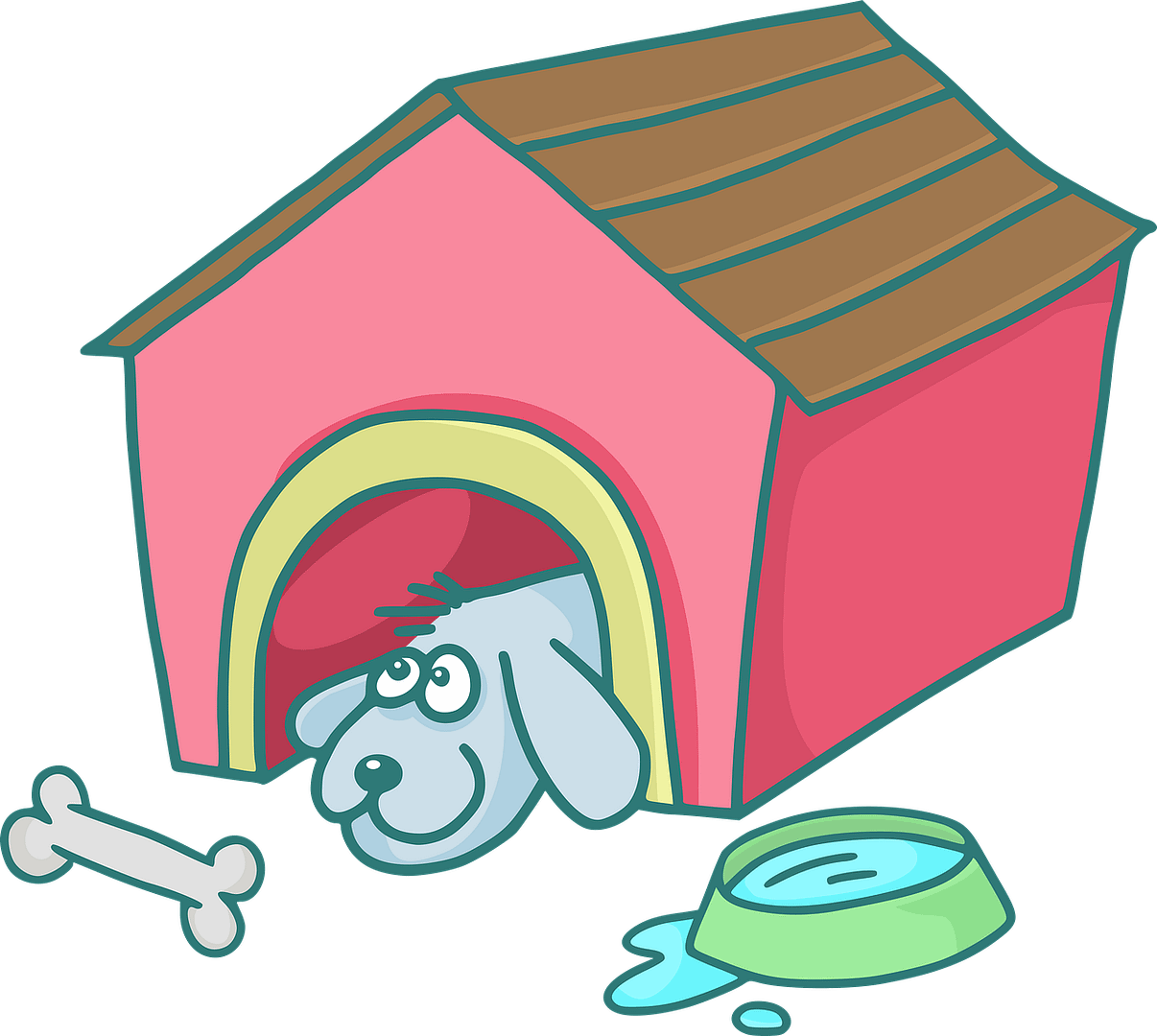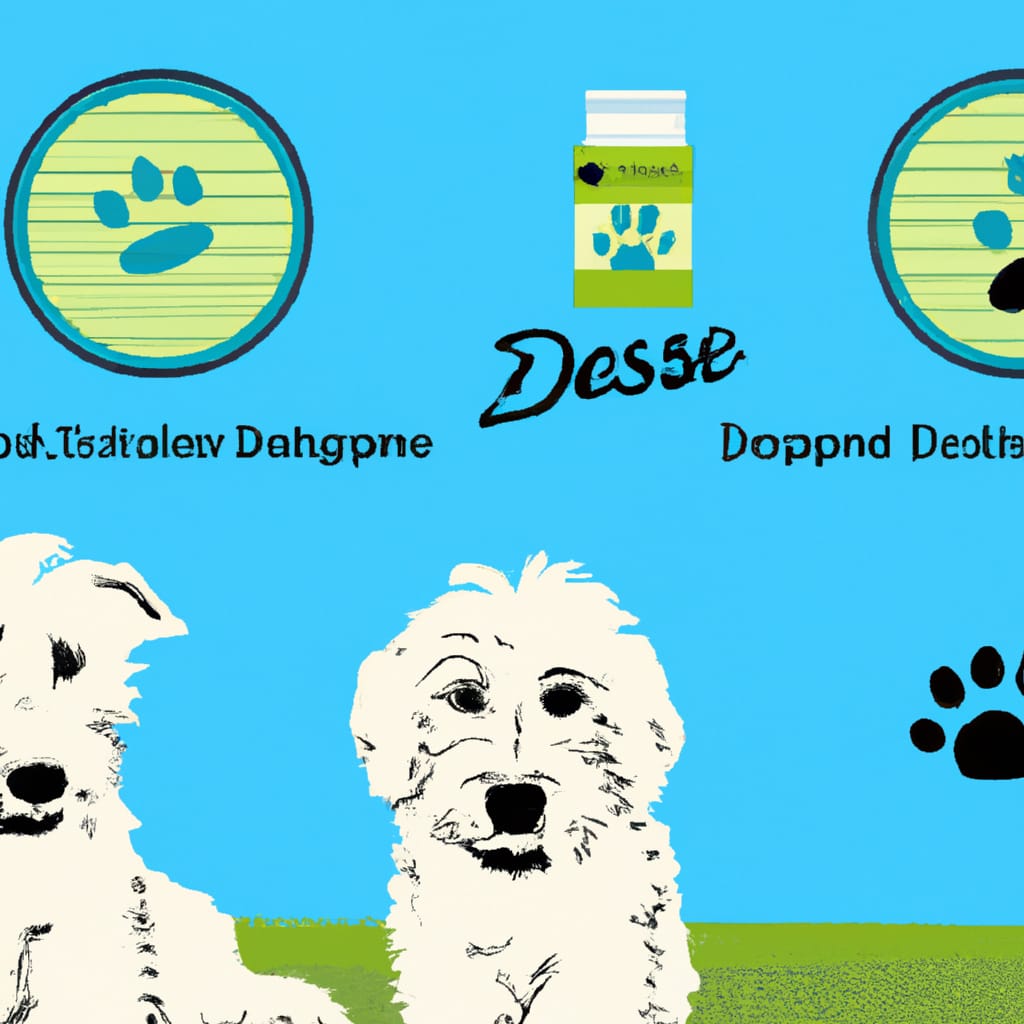Doodle Dog Breeding: Health Considerations For Responsible Breeders
Have you ever considered becoming a breeder of adorable doodle dogs? If so, it’s crucial to educate yourself about the important health considerations involved in responsible breeding. From genetic testing to proper diet and exercise, this article will provide you with essential information to ensure the well-being of both the parent dogs and their future litters. Join us as we explore the world of doodle dog breeding and discover how you can make a positive impact on this popular and lovable breed.
Health Testing
Genetic Testing
When it comes to responsible dog breeding, genetic testing plays a crucial role in ensuring the health and well-being of the future generations. By conducting genetic tests, breeders can identify potential hereditary diseases and conditions that may be present in their breeding dogs. This allows them to make informed decisions and reduce the risk of passing on these diseases to the offspring. Genetic testing can screen for various conditions such as hip dysplasia, progressive retinal atrophy (PRA), and von Willebrand’s disease, among others.
Hip and Elbow Evaluations
Hip and elbow dysplasia are common orthopedic conditions that affect many dog breeds, including doodles. These conditions can lead to pain, lameness, and decreased quality of life for the affected dogs. By performing hip and elbow evaluations, breeders can assess the skeletal structure of their breeding dogs and identify any abnormalities or signs of dysplasia. This helps ensure that only dogs with healthy hips and elbows are used for breeding, reducing the risk of passing on these conditions to future generations.
Eye Tests
Proper eye health is essential for the overall well-being of dogs, and it is especially crucial for breeding dogs. Regular eye tests, performed by a veterinary ophthalmologist, can detect potential eye diseases or abnormalities that may be present in doodles. These tests can identify conditions such as cataracts, progressive retinal atrophy (PRA), and glaucoma. By conducting thorough eye examinations, breeders can ensure that their breeding dogs have healthy eyes and minimize the risk of passing on hereditary eye diseases to their offspring.
Heart Examinations
Heart conditions can be a significant concern in dog breeding, as certain breeds, including doodles, may be predisposed to certain cardiac abnormalities. By conducting heart examinations, such as echocardiograms or auscultations, breeders can assess the cardiovascular health of their dogs and detect any potential heart abnormalities. This helps ensure that only dogs with healthy hearts are used for breeding, reducing the risk of passing on cardiac conditions to future generations.
Allergy Screenings
Allergies are common in dogs, and doodles are no exception. By conducting allergy screenings, breeders can identify any potential allergies that their breeding dogs may have. This includes testing for both food allergies and environmental allergies. Knowing the specific allergies that a breeding dog may have can help breeders develop appropriate management strategies and make informed decisions when selecting mates. By considering allergies during the breeding process, breeders can minimize the risk of passing on allergic tendencies to the offspring.
Proper Nutrition
Balanced Diet
Proper nutrition is vital for the health and well-being of both breeding dogs and their offspring. A balanced diet should provide all the necessary nutrients, including proteins, carbohydrates, fats, vitamins, and minerals, in appropriate proportions. Breeders should work closely with veterinarians or canine nutritionists to create a dietary plan that meets the specific needs of their breeding dogs. A balanced diet not only supports the overall health of the dogs but also contributes to optimal fertility and reproductive performance.
Avoiding Fillers and By-Products
When selecting a dog food, it is crucial to choose products that do not contain fillers or by-products. Fillers, such as corn, soy, and wheat, offer little nutritional value and can contribute to digestive issues and allergies in dogs. By-products, such as beaks, feathers, and hooves, are low-quality protein sources and may not provide the necessary amino acids for proper growth and development. Opting for high-quality dog food without fillers or by-products ensures that the breeding dogs and their offspring receive the best possible nutrition.
Considering Special Nutritional Needs
Some breeding dogs may have specific nutritional needs due to factors such as age, health conditions, or reproductive status. For example, pregnant or lactating dogs require additional calories and nutrients to support the growth and development of their puppies. It is important for breeders to consider these special nutritional needs and adjust the diet accordingly. Consulting with a veterinarian or canine nutritionist can provide valuable guidance and ensure that the breeding dogs receive the optimal nutrition throughout their reproductive journey.
Understanding Food Allergies
Food allergies can be a concern in both breeding dogs and their offspring. Some dogs may develop allergies to certain ingredients commonly found in dog food, such as chicken, beef, or grains. If a breeding dog has known food allergies, it is essential for the breeder to avoid these allergens in the dog’s diet and any potential mates. Additionally, breeders should be vigilant in monitoring the offspring for any signs of food allergies and adjust their diets accordingly. Understanding food allergies and making appropriate dietary adjustments can help maintain the health and well-being of the breeding dogs and their puppies.

Exercise and Mental Stimulation
Physical Exercise
Regular physical exercise is crucial for the overall health and well-being of dogs, including breeding dogs. Engaging in physical activities such as walks, runs, or play sessions helps maintain a healthy weight, strengthens muscles and bones, and promotes cardiovascular fitness. It is important for breeders to provide opportunities for their breeding dogs to engage in regular exercise to support their overall physical health. However, it is essential to consider the individual dog’s needs and consult with a veterinarian to determine the appropriate exercise routine, as excessive exercise or high-impact activities may be detrimental to certain dogs, especially those with orthopedic conditions.
Mental Stimulation
In addition to physical exercise, mental stimulation is equally important for breeding dogs. Mental enrichment helps prevent boredom and promotes cognitive health and overall well-being. Breeders can provide mental stimulation through various activities such as puzzle toys, obedience training, scent work, or interactive games. These activities challenge the dog’s problem-solving skills, promote bonding with the breeder, and keep their minds sharp. By incorporating mental stimulation into the daily routine, breeders can support the mental health and happiness of the breeding dogs.
Socialization
Proper socialization plays a crucial role in the development of well-rounded dogs. Breeders should expose their breeding dogs to various social experiences from an early age. This includes introducing them to different people, animals, sounds, and environments. Socialization helps puppies develop the necessary social skills and confidence to interact positively with their new families and the world around them. Breeders can facilitate socialization by organizing playdates with other dogs, inviting visitors to interact with the puppies, and exposing them to different environments. By prioritizing socialization, breeders contribute to the overall mental well-being of the breeding dogs and set them up for success as adult dogs.
Training and Obedience
Training and obedience are essential aspects of responsible dog ownership and should be a priority for breeders. By providing training to their breeding dogs, breeders establish a foundation of basic obedience commands and manners. This not only promotes desirable behavior but also helps ensure the safety and well-being of the dogs and their future families. Breeders can also consider additional training, such as advanced obedience or participation in dog sports, depending on the individual dog’s temperament and abilities. Consistent training not only supports the breeding dog’s mental stimulation but also fosters a strong bond between the breeder and the dog.
Grooming and Coat Maintenance
Brushing and Combing
Grooming is an essential part of caring for doodles, as their unique coats require regular attention. Brushing and combing help prevent matting, remove loose hair, and maintain the coat’s overall health and appearance. Breeders should establish a grooming routine from an early age and ensure that the breeding dogs are comfortable with the grooming process. Regular brushing helps distribute natural oils, reduces shedding, and promotes healthy skin and coat. The frequency and tools required for brushing may vary depending on the type of coat (such as wavy or curly) and individual dog’s needs.
Coat Trimming
Depending on the specific coat type of the doodle breed, breeders may need to consider coat trimming to maintain a tidy and manageable appearance. Trimming can help prevent matting, keep the coat at an appropriate length, and ensure good hygiene. Breeders with expertise in grooming can trim the coats themselves or seek professional assistance from a groomer. Regular coat trimming not only improves the aesthetic appeal but also reduces the risk of skin issues and facilitates easier maintenance.
Shampooing and Conditioning
A healthy coat starts with proper bathing and conditioning. Breeders should use high-quality dog shampoos and conditioners suitable for doodles. Regular bathing helps keep the coat clean, removes dirt and debris, and prevents skin irritations. It is important to use products that are gentle on the skin and coat and do not strip away the natural oils. Breeders should also ensure thorough rinsing to avoid any residue that can lead to skin irritation. Following a regular bathing routine contributes to the overall cleanliness and health of the breeding dog’s coat.

Preventing Common Health Issues
Regular Veterinary Check-Ups
Regular veterinary check-ups are essential for the well-being of breeding dogs. Breeders should establish a relationship with a trusted veterinarian who can provide comprehensive care and guidance. Regular check-ups allow veterinarians to monitor the breeding dog’s overall health, address any concerns promptly, and update vaccinations and preventative medications. These visits also provide an opportunity to discuss any specific health considerations relevant to the breeding dog’s breed and individual characteristics.
Vaccinations and Preventative Medications
Vaccinations and preventative medications are crucial in safeguarding the health of breeding dogs. Breeders should work closely with their veterinarian to ensure that the breeding dogs are up to date on all necessary vaccinations, including those that protect against common diseases such as rabies, distemper, parvovirus, and leptospirosis. Additionally, preventative medications should be administered to protect against parasites, such as fleas, ticks, and heartworms. By following a comprehensive vaccination and preventative medication schedule, breeders minimize the risk of their dogs contracting and spreading preventable diseases.
Parasite Control
Parasite control is a vital aspect of responsible dog breeding. Breeders should implement a proactive approach to prevent and control parasites in their breeding dogs. Regular flea and tick prevention, as well as heartworm prevention, should be incorporated into the breeding dog’s routine. Additionally, breeders should conduct routine fecal examinations to detect and treat any intestinal parasites that may be present. By maintaining a strict parasite control regimen, breeders not only protect the health of the breeding dogs but also minimize the risk of parasites being passed on to the puppies.
Dental Care
Proper dental care is often overlooked but is critical for the overall health of breeding dogs. Dental disease can lead to pain, infections, and even systemic health issues if left untreated. Breeders should practice regular dental hygiene, including brushing the dog’s teeth, providing dental chews or toys, and considering professional dental cleanings when necessary. Maintaining good dental health contributes to the breeding dog’s overall well-being and reduces the risk of dental issues being passed on to the offspring.
Avoiding Overbreeding
Responsible Breeding Practices
Responsible breeders prioritize the health and well-being of their breeding dogs and the longevity of the breed as a whole. Overbreeding can have detrimental effects on the health of individual dogs and the overall breed population. Breeders should exercise caution and ensure that they are not exceeding the breeding dog’s physical and mental capacity. Responsible breeding practices include limiting the number of litters produced by a breeding dog, providing adequate rest periods between litters, and retiring breeding dogs at an appropriate age. Breeders should always prioritize the quality of the breeding program over quantity.
Health Clearances for Breeding Dogs
Health clearances are an essential tool for responsible breeders to help minimize the risk of passing on hereditary diseases and conditions to the offspring. Various health clearances are available for different breeds and can include evaluations for hips, elbows, eyes, heart, and genetic diseases. Breeders should obtain these health clearances for their breeding dogs from reputable organizations, such as the Orthopedic Foundation for Animals (OFA) and the Canine Eye Registration Foundation (CERF). Health clearances provide valuable information about the breeding dog’s genetic health and help breeders make informed decisions during the breeding process.
Allowing Adequate Rest Periods Between Litters
Breeding dogs require adequate rest periods between litters to recover physically and mentally. Continuous breeding without proper rest can lead to increased health risks for the dam and reduced fertility in subsequent litters. Breeders should carefully consider the breeding dog’s well-being and allow sufficient time for recovery before considering another breeding. The specific rest period may vary depending on the individual dog’s health, age, and reproductive history. By prioritizing the breeding dog’s welfare and allowing ample rest between litters, breeders promote the long-term health and success of their breeding program.

Minimizing Genetic Disorders
Understanding Genetic Disorders in Doodle Dogs
Doodle breeds, like many other breeds, may be susceptible to certain genetic disorders. Breeders should have a thorough understanding of the potential genetic disorders that can affect their breed and be familiar with their prevalence and inheritance patterns. By staying informed, breeders can make educated decisions regarding which dogs to breed and take appropriate measures to minimize the risk of passing on these disorders to the offspring.
Selective Breeding to Reduce Risk
Selective breeding is a crucial tool for responsible breeders to reduce the risk of genetic disorders in their breeding dogs and their offspring. By carefully selecting mates based on their health clearances, genetic background, and compatibility, breeders can minimize the chances of producing puppies with hereditary diseases or conditions. Breeders should prioritize breeding dogs with excellent health clearances, ensuring that both parents have been thoroughly tested and are free of known genetic disorders. Selective breeding plays a pivotal role in minimizing the occurrence of genetic disorders within the breed population.
Consulting with Veterinary Geneticists
For complex genetic disorders, consulting with veterinary geneticists can provide valuable insights and guidance for breeders. Veterinary geneticists are experts in studying and understanding the genetics of animals. They can assess breeding plans, analyze the potential risks of specific pairings, and offer recommendations to reduce the prevalence of genetic disorders within the breed. Breeders can work alongside veterinary geneticists to implement responsible breeding strategies that aim to maintain the health and longevity of the breed.
Mating Considerations
Choosing Suitable Mates
Choosing suitable mates is one of the most critical decisions a breeder makes in the breeding process. Breeders should carefully evaluate potential mates based on various factors, including health clearances, temperament, conformation, and genetic compatibility. By selecting mates that complement each other’s strengths and weaknesses, breeders can increase the likelihood of producing healthy and well-rounded puppies. Proper research and consideration should be given to each potential mate to ensure the best outcomes for the breeding program and the breed as a whole.
Consanguinity and Inbreeding
Consanguinity, or close inbreeding, refers to mating dogs that are closely related, such as parent to offspring or sibling to sibling. While controlled and responsible inbreeding can be used to fix desirable traits, excessive or indiscriminate inbreeding can have detrimental consequences. It can increase the risk of genetic disorders, reduce overall genetic diversity, and compromise the health and vitality of the breed. Breeders should approach inbreeding cautiously, seek expert advice, and ensure that the benefits outweigh the potential risks.
Avoiding Birth Defects and Decreased Viability
Responsible breeders prioritize producing healthy puppies with optimal viability. By selecting mates carefully, breeders can reduce the risk of birth defects and improve the overall health and vitality of the offspring. Breeders should consider the potential mates’ health clearances, genetic backgrounds, and previous breeding records. This information allows breeders to assess the likelihood of producing healthy puppies and make informed decisions about the breeding pairings. By striving for healthy and viable puppies, breeders contribute to the long-term success and reputation of the breed.
Pregnancy and Whelping Care
Nutritional Needs During Pregnancy
Pregnancy places increased nutritional demands on the breeding dog’s body. Breeders should provide a high-quality, balanced diet that is suitable for pregnant dogs. This includes an appropriate increase in calories, protein, and other essential nutrients. Consulting with a veterinarian or canine nutritionist can help breeders determine the specific nutritional needs of the pregnant dog and adjust the diet accordingly. Meeting these nutritional needs is crucial for the health of both the mother and the developing puppies.
Monitoring Health During Gestation
Throughout the pregnancy, breeders should closely monitor the health and well-being of the mother dog. Regular veterinary check-ups can help detect any potential complications or concerns early on. Breeders should also observe the pregnant dog for any changes in appetite, behavior, or physical appearance and consult with their veterinarian if any abnormalities are noticed. By providing appropriate healthcare and monitoring during gestation, breeders ensure the well-being of the mother dog and the successful development of the puppies.
Assisting During Labor and Delivery
The breeder’s presence and assistance during labor and delivery are essential for a successful whelping process. Breeders should educate themselves about the signs of labor and be prepared to offer support and intervention if necessary. This may include providing a comfortable and quiet whelping area, assisting with the delivery process, and monitoring the mother and puppies for any signs of distress or complications. Breeders should also have a plan in place for emergency situations and be aware of when veterinary intervention is warranted. Being present and knowledgeable during labor and delivery ensures the safety and well-being of both the mother and the newborn puppies.
Caring for Newborn Puppies
Immediately after birth, breeders have a crucial role in caring for the newborn puppies. This includes ensuring that each puppy is breathing properly, removing any excess amniotic fluid, and facilitating the bonding between the mother and her puppies. Breeders should provide a warm and clean environment for the puppies, monitor their weight gain, and ensure that they are nursing adequately. Additionally, breeders should be prepared to provide extra care, such as bottle feeding or supplemental heat, if needed. Caring for newborn puppies requires attentiveness and nurturing to support their healthy development and growth.
Supporting Responsible Dog Ownership
Educating Potential Buyers
Responsible breeders play a vital role in educating potential buyers about the breed and the responsibilities of dog ownership. Breeders should provide accurate and comprehensive information about the breed’s characteristics, temperament, exercise needs, grooming requirements, and potential health concerns. They should also educate potential buyers about the importance of responsible dog ownership, including commitment, training, socialization, and lifelong care. By providing this information, breeders can help potential buyers make informed decisions and determine if the breed is a suitable fit for their lifestyle.
Providing Detailed Information and Documentation
Responsible breeders should provide detailed documentation to the new owners, including health records, registration papers (if applicable), and any relevant health clearances or test results. This information gives new owners a comprehensive understanding of the puppy’s background, health history, and genetic health. Breeders should also provide guidance on vaccination schedules, proper nutrition, grooming instructions, and training resources. By equipping new owners with the necessary information and documentation, breeders set the foundation for responsible dog ownership and ongoing care.
Offering Support and Guidance to New Owners
Responsible breeders should be available to provide ongoing support and guidance to the new owners throughout the dog’s life. This includes being a resource for advice, training assistance, or health concerns. Breeders can offer recommendations for veterinary care, training classes, and socialization opportunities. By maintaining an open line of communication and offering support, responsible breeders help ensure that the puppies they bred receive the best possible care and remain in loving and responsible homes.
In conclusion, responsible breeding goes beyond just pairing dogs and producing puppies. It requires a comprehensive approach that prioritizes the health, well-being, and long-term success of the breeding dogs and the breed as a whole. Through health testing, proper nutrition, exercise, grooming, preventative measures, and responsible breeding practices, breeders can minimize the risk of hereditary diseases, promote good physical and mental health, and produce puppies of sound temperament and conformation. By supporting responsible dog ownership and providing ongoing guidance, breeders contribute to the overall welfare and future of the breed.













